Date Published: April 4, 2017
By: Kirstie Ennis
Publication: MilitaryTimes; Original Article
—
In her own words: How a Marine veteran amputee conquered Mount Kilimanjaro for charity
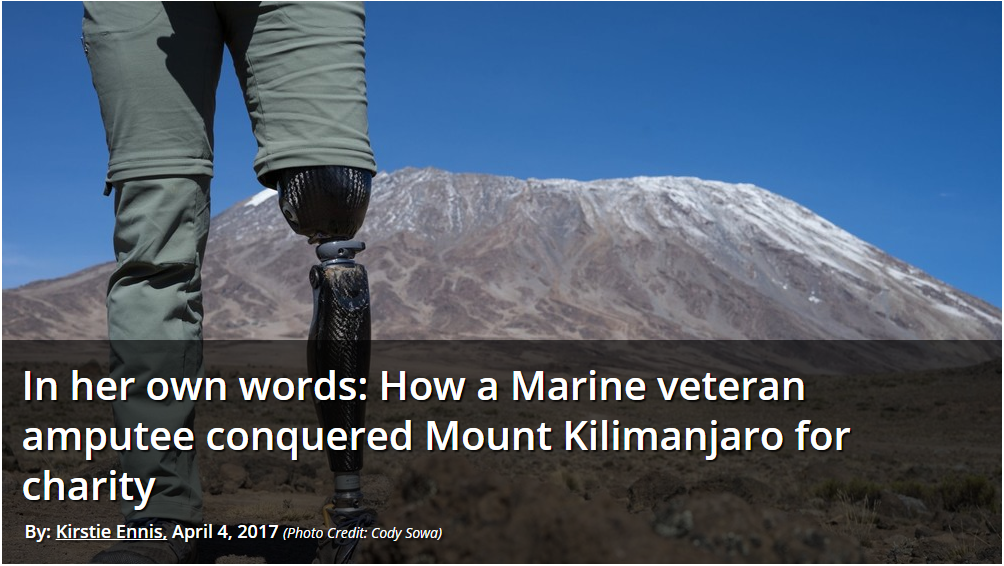
Editor’s note: Retired Marine Sgt. Kirstie Ennis climbed Mount Kilimanjaro in March as part of a fundraising effort for Waterboys.org, a nonprofit founded by NFL defensive end Chris Long that provides well water to African communities. Ennis became the first above-the-knee female amputee to make the climb, according to the group. Her journey, in her words:
My dream growing up was to join the Marine Corps. In 2008, at age 17, that dream became a reality.
In 2012, on my second deployment to Afghanistan, a helicopter crash turned that reality into my worst nightmare.
I lost my left leg above the knee. I suffered a traumatic brain injury, facial trauma, and various orthopedic issues to my spine and arms. I fought to stay in the Marine Corps, but ended up medically retired in 2014, facing a long road to recovery.
After taking off the uniform, I lost my sense of purpose. But in 2016, I found a new passion when I began training to climb the Carstensz Pyramid in Indonesia – many say it’s the most difficult climb of the so-called “Seven Summits,” the highest peaks on each continent.
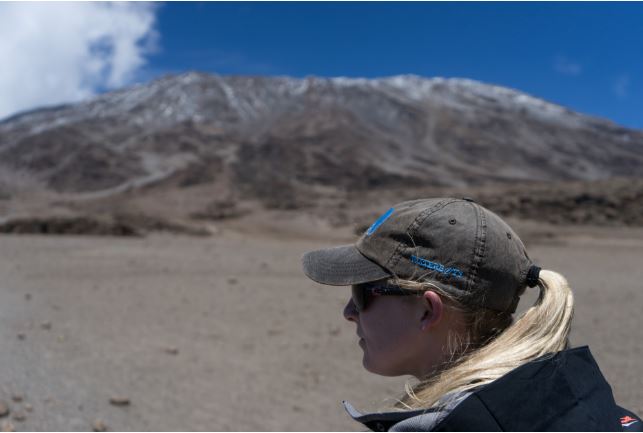
Retired Marine Sgt. Kirstie Ennis was part of a climbing team made up of members of the military and NFL communities that tackled Mount Kilimanjaro in March.
Photo Credit: Cody Sowa
While training, I found a love in the mountains that is far from comparable, and I knew it would be how I would continue my service.
In October 2016, Nate Boyer from Waterboys asked about my intentions with the Seven Summits. I gave him the short version: Raise money and awareness for humanitarian efforts while doing the unthinkable – reaching the top of the world on one leg. It was a perfect match for the Conquering Kili program, which eventually would reach its goal of raising $150,000 to provide water to those in need.
The mission was the water, but the challenge was Kilimanjaro. Why do it? Simple: Clean water initiatives have been around for decades, but public interest has been minute. To attract donors, we needed something sexy.
We are in the age of the veteran, and the era of the woman. With that realization, Ivan Castro (an Army vet left totally blind by combat wounds, who is also my hero), Pete Quintanilla (a Marine Corps vet and below-the-knee amputee) and I decided to tackle the “Roof of Africa.”
THE TRIP BEGINS
The first four days of the Tanzania trip were eye-opening. While my perspective has shifted many times because of what I’ve endured, this experience truly changed my life.
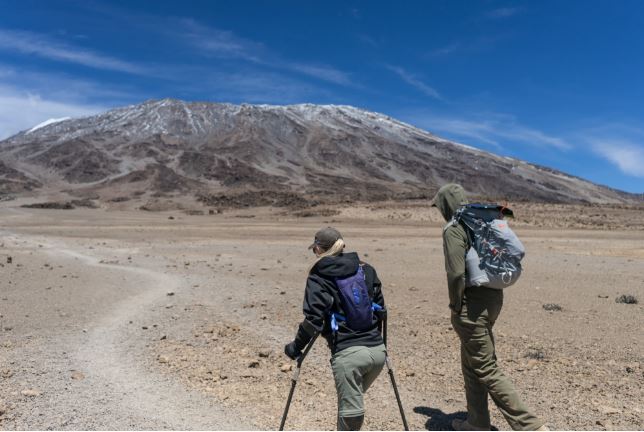
The path up Mount Kilimanjaro wasn’t all vertical — Ennis said some of the most difficult parts came during long, flat stretches.
Photo Credit: Cody Sowa
We visited two secondary schools and several villages of the Maasai tribe. These people who have nearly nothing compared to what we have in the U.S. continuously wear a smile; they forever will be a reminder of how to live my life.
They were happy to see Americans, professional football players and veterans alike. Yes, we were bringing them sources of clean water, but they were seemingly more excited to have our company. The kids especially were extremely curious about me, my “robot” leg and, even more, my blond hair.
In that moment, it really hit me that these people would never leave their country and probably never meet someone who looked like me again. We were all made “elders” of the tribe, and I have every intention to make a return visit.
The hike crept up on us. I knew I was ready physically, but the threat of a failing prosthetic or residual limb was very real.
After a fast first day, I endured tens of thousands of right leg lunges and triceps dips to cover a very steep and rocky eight miles on Day 2. The third day was mostly mind games played by the mountain, as we backtracked and lost elevation before gaining at the end.
The mind games worked: I vividly remember watching Pete and thinking, “I will never complain about being an amputee because I am happy to be alive, but I would kill to have my knee back.”
Everyone said the fourth day would be the easiest, especially for me, but they couldn’t have been more wrong. With a long, slow, flat day with only 1,000 feet of elevation gain, I was miserable. My right side was destroyed with the amount of compensating I had to do. I was dragging my feet through the sand, watching the huts we were walking toward never get bigger.
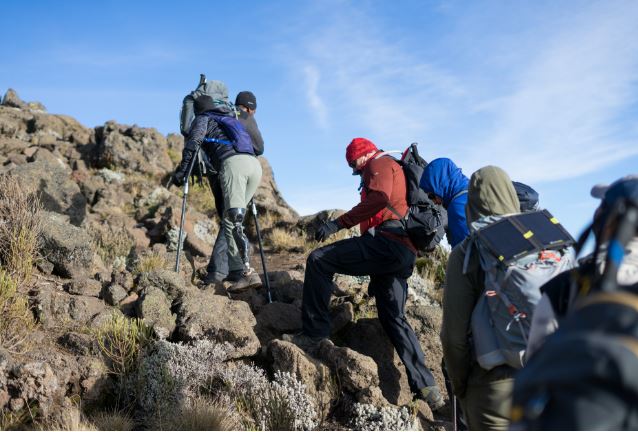
Ennis and fellow team members, including former NFL players, head uphill during the climb’s third day.
Photo Credit: Cody Sowa
We rested that afternoon and well into the evening, beginning our summit attempt at 11 p.m. The first few hours flew by, and then I hit the sand and scree – small loose stones.
My footing is crucial. I don’t have much leverage with my left leg, and once it is bending, I am falling. The number of times I fell before Gillman’s Point, on the rim of Kili’s crater, is countless. I was pissed. I was in pain. The altitude was making my leg swell inside of my carbon fiber socket, in turn cutting off circulation.

Kirstie Ennis
Photo Credit: Courtesy of Sunshine Sachs
I knew I would not give up. Motivation came from unusual places: One of the nicknames given to me on the trip was the Swahili word for goat, and as strange as it is to have NFL players making goat sounds behind you, it’s part of what kept me going.
Once we reached Gillman’s Point, then Stella Point, I knew that the dog tag I carried from for Lance Cpl. Matthew Rodriguez (killed in action Dec. 11, 2013, in Helmand province, Afghanistan) would rest easy on the highest point in Africa, more than 19,300 feet above sea level.
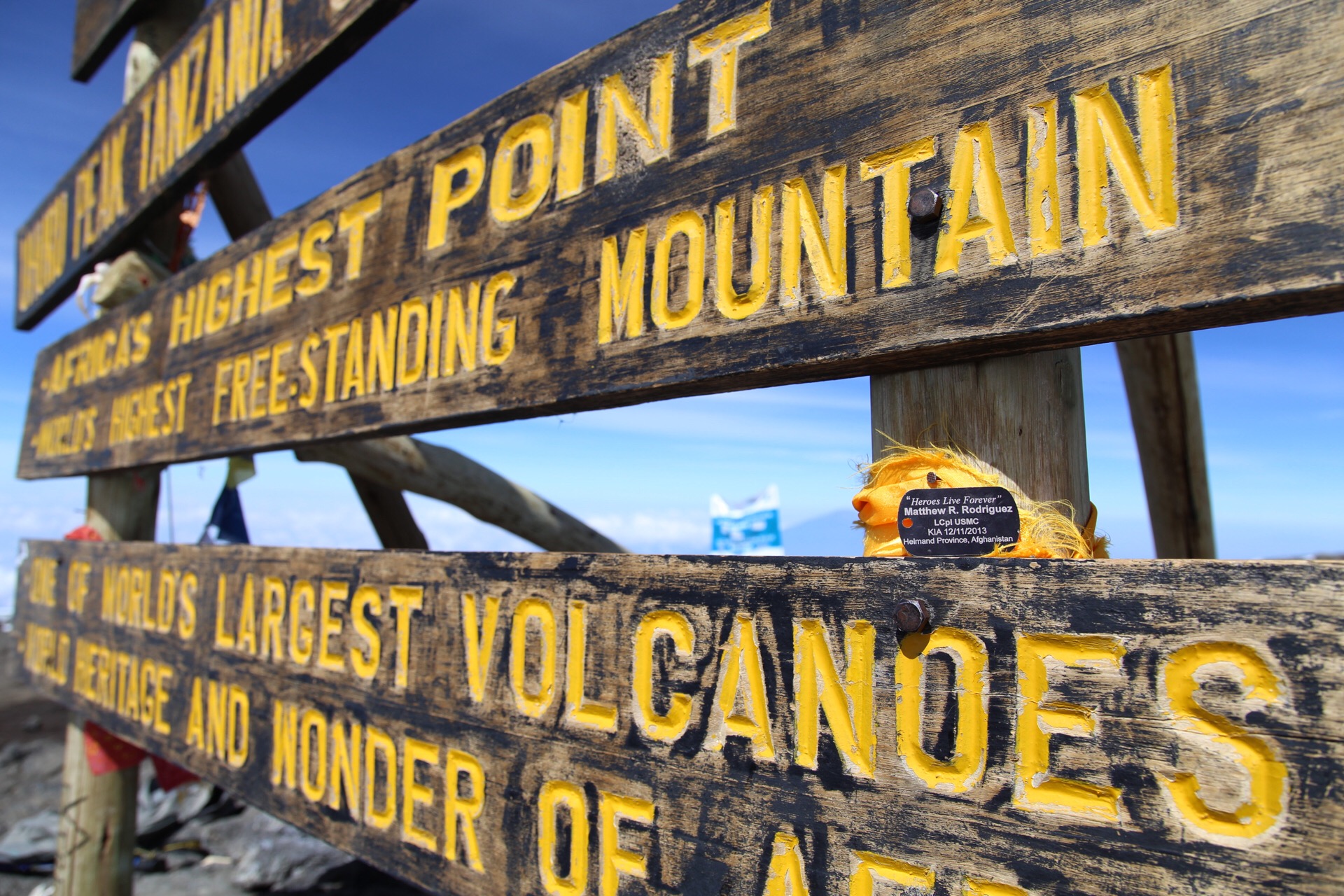
Ennis honored fallen Marine Lance Cpl. Matthew Rodriguez with this tribute atop the mountain.
Photo Credit: Cody Sowa
By summiting Kilimanjaro, I was able to show the world what I was capable of. I showed that regardless of your situation, you control your circumstances, they do not control you. More importantly, I did so while helping bring clean water to tens of thousands of people. You can learn more about the climb and the cause at www.waterboys.org/kili.
Kirstie Ennis served six years in the Marine Corps as an airframes mechanic and aerial gunner. She is now the junior director of Wounded Warrior Outdoors and is on Instagram (Kirstie_ennis) and Twitter (@KirstieEnnis).
